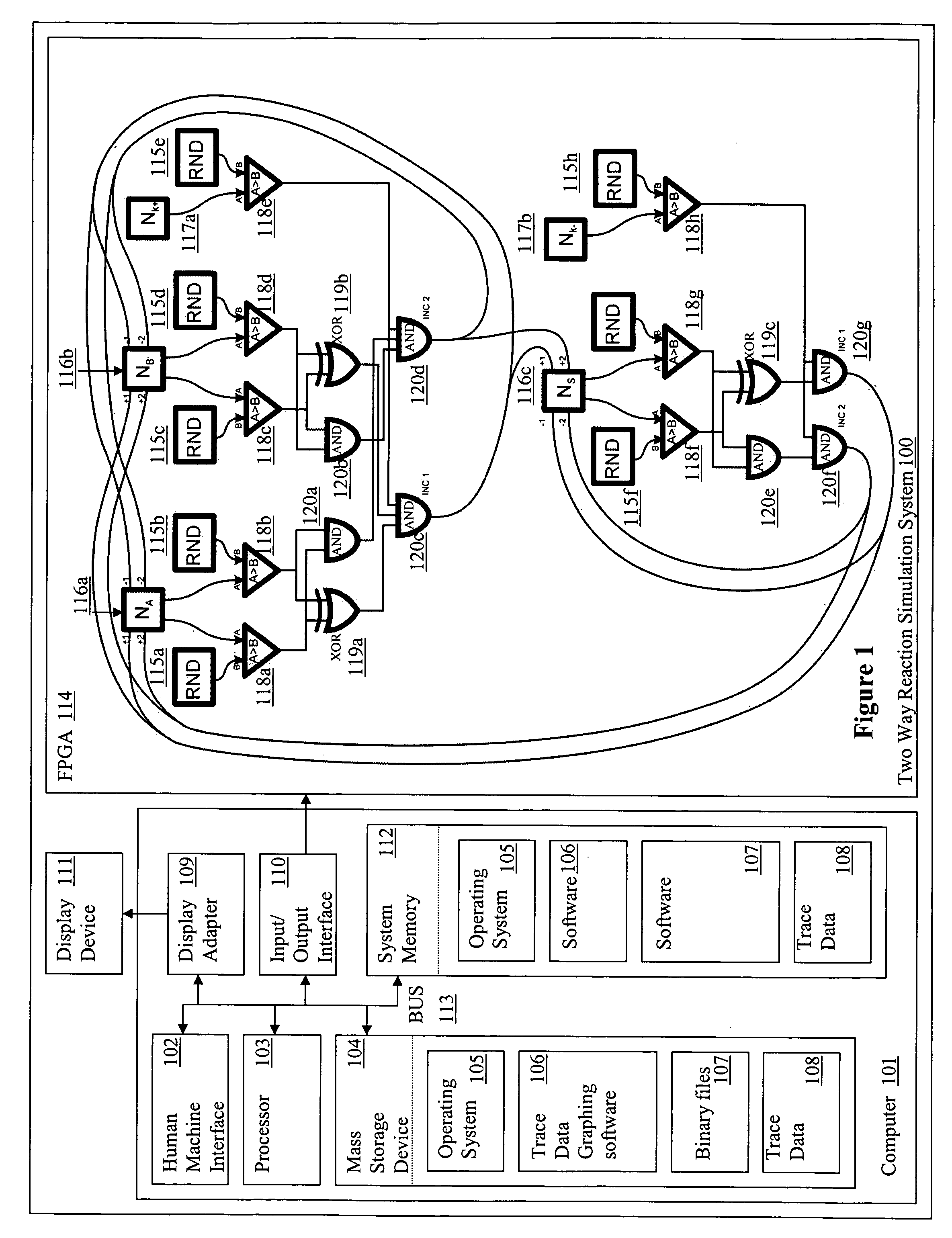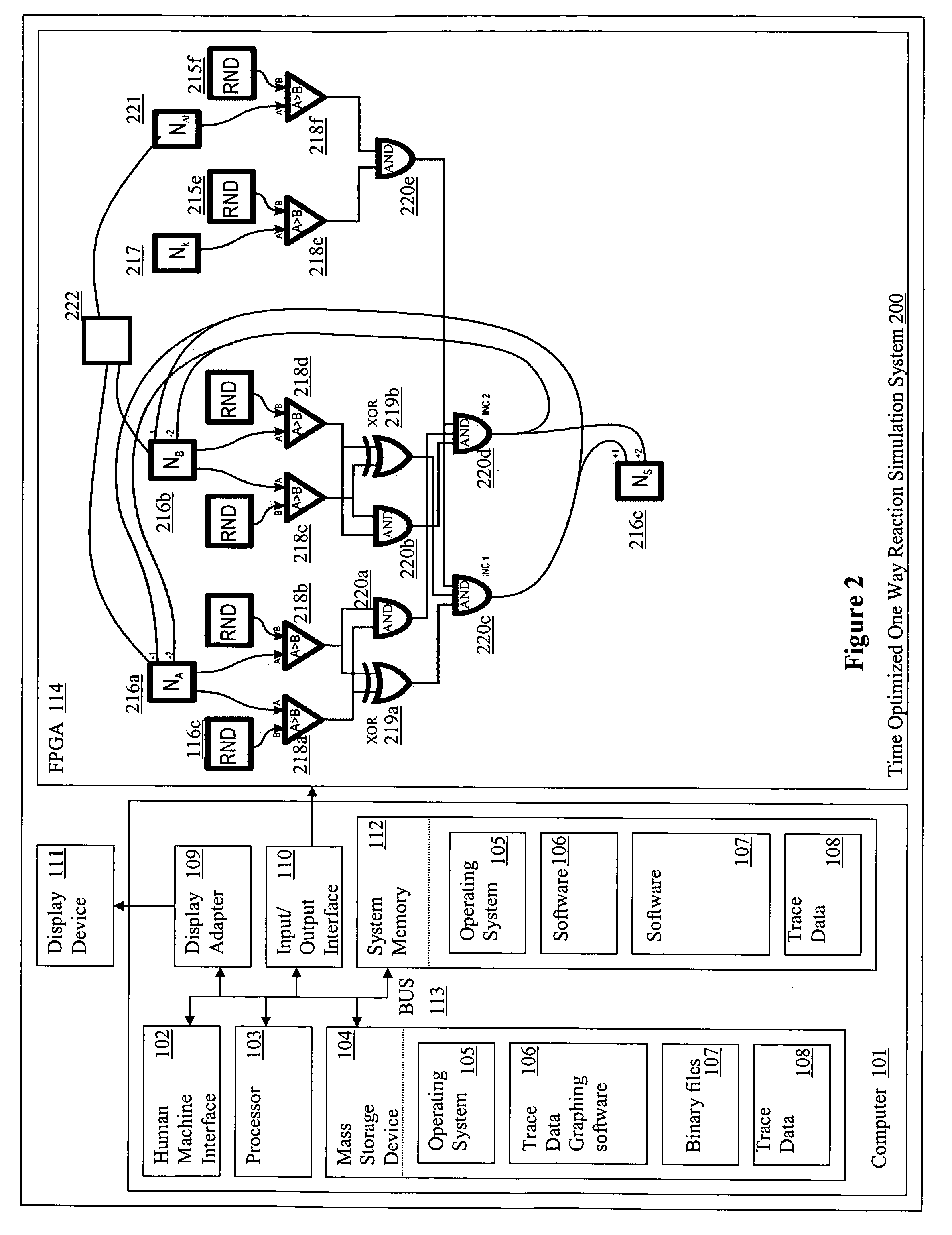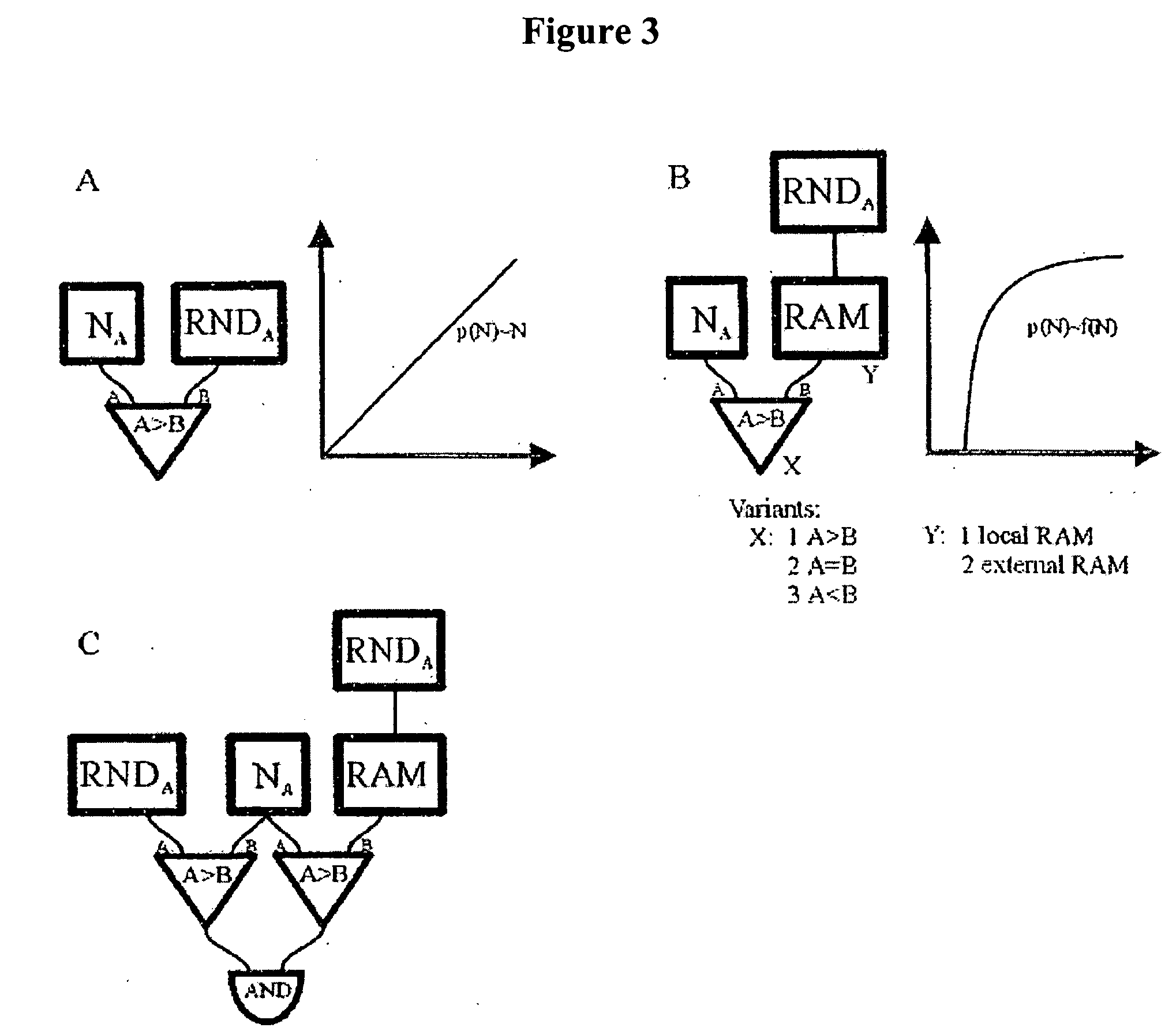Method for simulating the dynamics of biological networks in silico
a biological network and dynamics technology, applied in biological models, instruments, analogue processes for specific applications, etc., can solve the problems of high computational cost of stochastic simulation on conventional microprocessor-based computers, complexity of response emerges from the structure and dynamics of entire networks, and simulation of larger networks approaching the size of those describing the behavior of entire cells has not yet been possibl
- Summary
- Abstract
- Description
- Claims
- Application Information
AI Technical Summary
Problems solved by technology
Method used
Image
Examples
example 1
FPGA Simulation of an Elementary Bimolecular Reaction
[0078] The number of molecules of each reactive species was stored as a number within 16-bit bi-directional counters (Na, Nb, Nc) whereas constants, such as those defining the stochastic reaction rates were stored within 16-bit registers (Nk). After these were loaded with the initial values, the state of all the counters was updated, in two phases, every system clock cycle. FIG. 4A illustrates the design of the logic chip used.
[0079] Every rising edge of the clock triggered generation of a set of 16-bit random numbers by Linear Feedback Shift Register (LSFR)-based pseudo-random number generators. The generated values were then compared with the current state of the relevant counters and registers. Because the random numbers generated by distinct generators were statistically independent, the probability that each of them was smaller than the corresponding counter (register) value was:
pt=p(RNDA<NA,RNDB<NB, RNDk<Nk)=a·NA...
example 2
Stochastic Simulation of the Michealis-Menten Kinetics
[0085] Whereas time evolution of the above reaction can be analyzed analytically, behavior of systems even slightly more complex, such as enzymatic reactions described by Michealis-Menten equations have to be simulated numerically even when the size of the system justifies deterministic description of the system. FIG. 5 shows time courses generated by an FPGA circuit simulating simple Michaelis-Menten kinetics of enzymatic reaction (S—substrate, P—product, E—free enzyme, ES—enzyme-substrate complex) for a system of 200 molecules (FIG. 5A) and another of 20,000 molecules (FIG. 5B). The simulated traces generated for the 20,000 molecule system closely follow the deterministic solution of the corresponding set of coupled kinetic equations whereas the 200 molecule system reveals pronounced stochastic fluctuations around the deterministic values (dashed curves). For systems of both large and small size, the simulated traces (solid li...
example 3
Stochastic Simulation of the lacZ Gene Expression
[0086] A simplified model of lacZ expression was implemented within an FPGA. It was composed of 11 coupled reactions involving 12 distinct reactive species. The traces generated during FPGA-implemented simulation (FIG. 6) show good qualitative agreement with the results of a Gillespie-based simulation. Notice that despite a significant increase of the system complexity, its entire state has been updated every clock cycle, as in the preceding examples. Most notably, at low induction strength, pronounced stochastic fluctuations of the protein synthesis rate are easily observed.
[0087] Dynamics of the model were simulated at two levels of promoter strength. FIG. 6 shows how the amount of the synthesized protein changed during independent runs (2 traces for the strong (FIG. 6A) and 10 for the weak promoter (FIG. 6B)). There was a drastic increase of the noise level for the weak promoter case, qualitatively in agreement with the results o...
PUM
 Login to View More
Login to View More Abstract
Description
Claims
Application Information
 Login to View More
Login to View More - R&D
- Intellectual Property
- Life Sciences
- Materials
- Tech Scout
- Unparalleled Data Quality
- Higher Quality Content
- 60% Fewer Hallucinations
Browse by: Latest US Patents, China's latest patents, Technical Efficacy Thesaurus, Application Domain, Technology Topic, Popular Technical Reports.
© 2025 PatSnap. All rights reserved.Legal|Privacy policy|Modern Slavery Act Transparency Statement|Sitemap|About US| Contact US: help@patsnap.com



